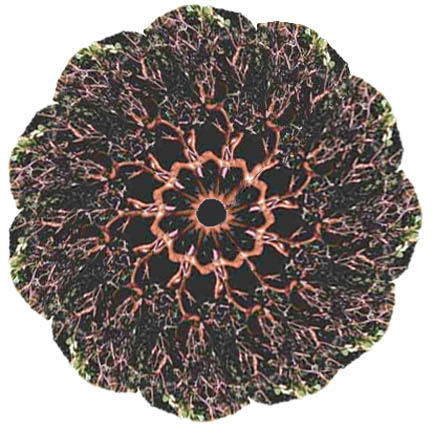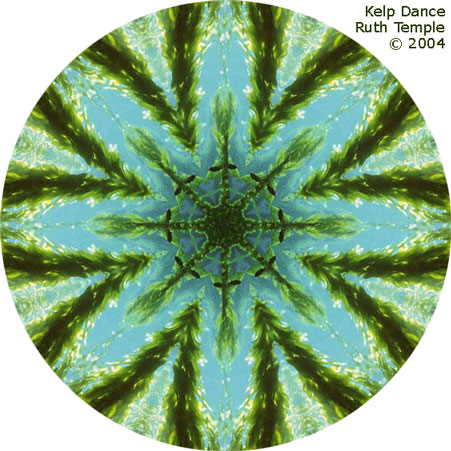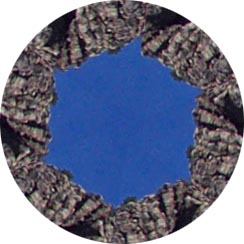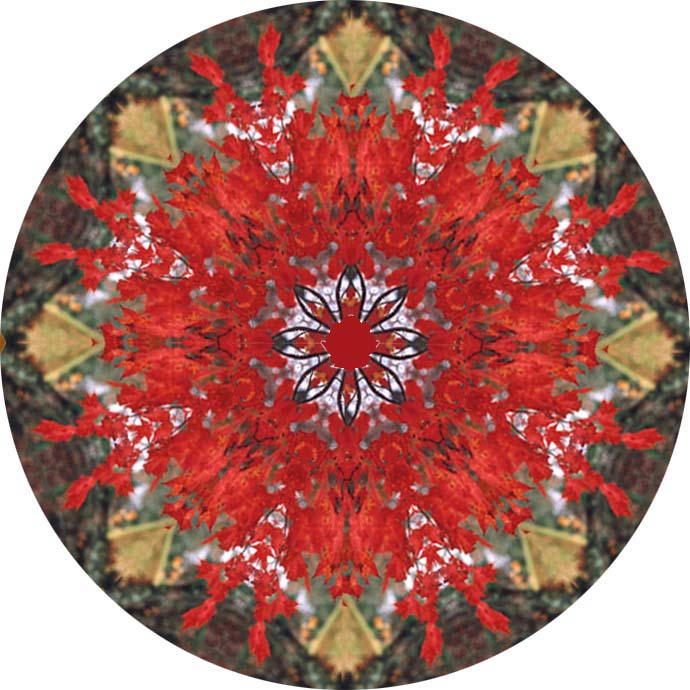Garden
Travels
Dance and Music
Writing
Community
Ru Temple Design Studio

Ru's First Set of Mandalas
|
Mandalas are found everywhere and have powerful symbolism across all
cultures.
|
I have always been fascinated with sacred geometries, from architectural detail to
the subtle physics of musical composition. The golden mean, phi fascinates
me wherever I find it in natural forms and in the ways people have applied it in art
and science. This gets carried over to my explorations of art of all kinds. I was
delighted when a friend, Moderngypsy, spread her idea for a technique of
making manadalas by means of clipping and twisting and pasting elements in
PhotoShop, and I've been
greatly enjoying making them since. Here are a few for your enjoyment, with some
more indepth notes on what it is I'm doing in PhotoShop, and links to other mandala
mavens and how-to sites at the bottom of the page:
I have archived off a page of the first digital mandala made, which may be seen here at http://rulise.net/ mandalaefirst.html
The basic technique I use was learned from Elizabeth Badurina, where you copy a wedge-shaped piece out of a photo you adore, and drop it into PhotoShop; copy a few more times, and Edit Transform each layer of picture-wedge into place by rotating and snugging them up one against another. When you have a few rotated around and placed, merge those layers and copy and paste and manipulate larger wedges. While it's tempting to go for even 8s or 12s, it's also fascinating to see if you can make an odd number of wedges all fit together.
Here's a quick description of how and what I do in making a mandala, from 2004: I use PhotoShop on a Mac to do this; you you cut and paste a wedge-slice, and either double the image with a flipped copy (like the cars) or not (like the manzanita first one I did). Copy and paste your basic element (where it lands in a new layer), and select and Transform that (?-T) with a free-rotate tool; then it's up to your eye and brain to joggle 'em right so you get even iterations however-many around. I freely confess to having a wiggly-enough brain to really enjoy things like the 11- fold radial symmetry of the manzanita mandala the best, but when my car-iterations were being Just Too Wierd to fit as originally sized, I joggled 3 iterations into a 90° wedge, and copied and spun that three times to make the 12-fold symmetry of the bookended image. Still with me? I used another photo of the other side of the car, flipped that to make the center, and used an 8-fold spin of foliage from that second photo to fill out the greenery behind the center motif; saved all this as a .psd file; saved a copy of all this to another file where I linked all the layers, selected a circular image, cut and pasted that to a new document, refined the size, flattened the image and saved to the jpg you see.
Some links to other Mandala makers, and thoughts about mandalas:
Eliza's Mandala page and technique are here at moderngypsy.com.
There's a great educational site with background information on mandalas and their historic use at Sacred Geometry
Kristi Schuler makes mandalas by another method. Her gallery may be found here at Designedly, Kristi
Earth Mandalas has a different technique, tutorial and template you can easily
use in
Photoshop, here.
Powell's Books carries a number of good books on
Mandalas and the making thereof. Support independent booksellers like Powells!














